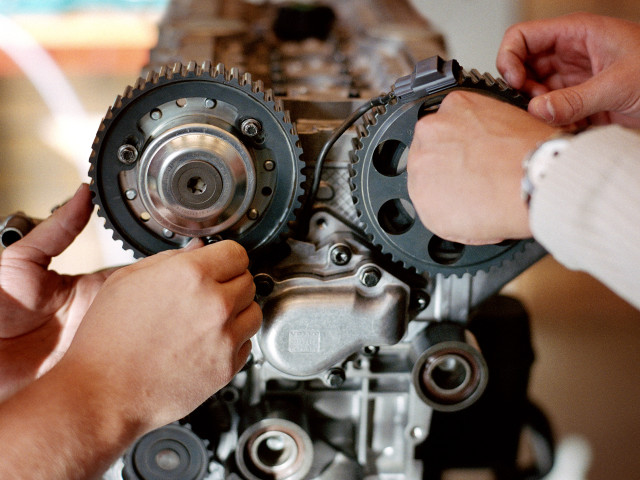Vehicle types, structure, use and demands. Vehicles role in transportation. Requirements for vehicles. Wheels, tires and rolling resistance. Brakes. Innovations and patents. Drivetrain. Chassis. Rail vehicles. Terminals and signalling. Vehicle-track interaction. Statistical design of experiments. Vehicle dynamics and comfort. Traction Technology, energy and environment. Future trends.
SD2221 Vehicle System Technology 8.0 credits

Information per course offering
Choose semester and course offering to see current information and more about the course, such as course syllabus, study period, and application information.
Information for Autumn 2026 Start 24 Aug 2026 programme students
- Course location
KTH Campus
- Duration
- 24 Aug 2026 - 23 Oct 2026
- Periods
Autumn 2026: P1 (8 hp)
- Pace of study
67%
- Application code
11201
- Form of study
Normal Daytime
- Language of instruction
English
- Course memo
- Course memo is not published
- Number of places
Max: 40
- Target group
- Open for: All Master of Science in Engineering in year 3 and all Master programmes as long as it can be included in your programme.
- Planned modular schedule
- [object Object]
- Schedule
- Schedule is not published
- Part of programme
- No information inserted
Contact
Course syllabus as PDF
Please note: all information from the Course syllabus is available on this page in an accessible format.
Course syllabus SD2221 (Autumn 2018–)Content and learning outcomes
Course contents
Intended learning outcomes
This introductory course will give you knowledge of vehicle system technology, and the vehicles role in the transport system and in society.
The aim of the course is to give the student a basic knowledge on road and rail vehicle design and performance.
After a completed course you should be able to:
- formulate problems and apply the methodology in the vehicle sector to seek and evaluate solutions
- apply knowledge and skills acquired during the studies, on problems in vehicle technology
- describe vehicles role in transportation
- describe vehicle types, structure, use and requirements
- describe vehicle systems, sub-systems and their function
- describe how vehicles effect the environment on local, regional and global level
- describe vehicle forces and its relation to weight, air resistance, rolling resistance, etc.
- calculate start, acceleration and retardation of vehicles,
- have basic knowledge on vehicle dynamic performance and comfort,
- describe vehicle development from a systems engineering perspective, from market, to requirements and product development. Innovations and patents.
- discuss the trends and future potential of vehicles
Literature and preparations
Specific prerequisites
Fundamentals of mechanical and electrical engineering.
For "single course students":150 university credits (hp) In engineering or natural sciences and documented proficiency in English corresponding to English B.
Literature
Course literature will be available in BILDA by Div. of Vehicle Dynamics and Div. of Rail Vehicles, KTH.
Examination and completion
Grading scale
Examination
- INL2 - Excercises, 4.0 credits, grading scale: P, F
- TEN1 - Examination, 4.0 credits, grading scale: A, B, C, D, E, FX, F
Based on recommendation from KTH’s coordinator for disabilities, the examiner will decide how to adapt an examination for students with documented disability.
The examiner may apply another examination format when re-examining individual students.
If the course is discontinued, students may request to be examined during the following two academic years.
Other requirements for final grade
Written Exam (TEN1; 4 hp; A/F), compulsory.
Exercises (ÖVN1; 4 hp; A/F), compulsory.
The number of points achieved for TEN1 and ÖVN1 are summed. The final grade is based on this sum.
Examiner
Ethical approach
- All members of a group are responsible for the group's work.
- In any assessment, every student shall honestly disclose any help received and sources used.
- In an oral assessment, every student shall be able to present and answer questions about the entire assignment and solution.